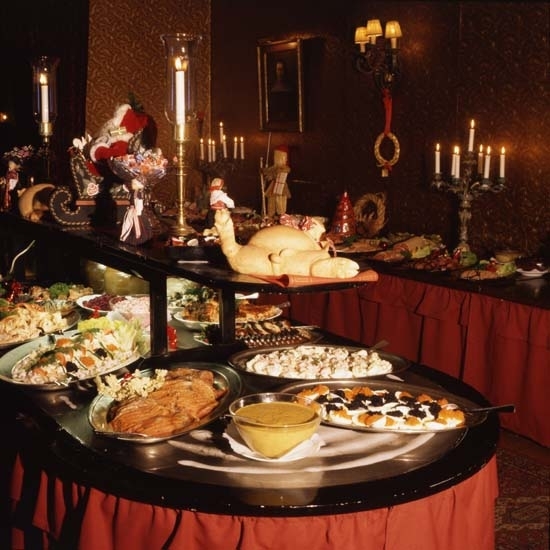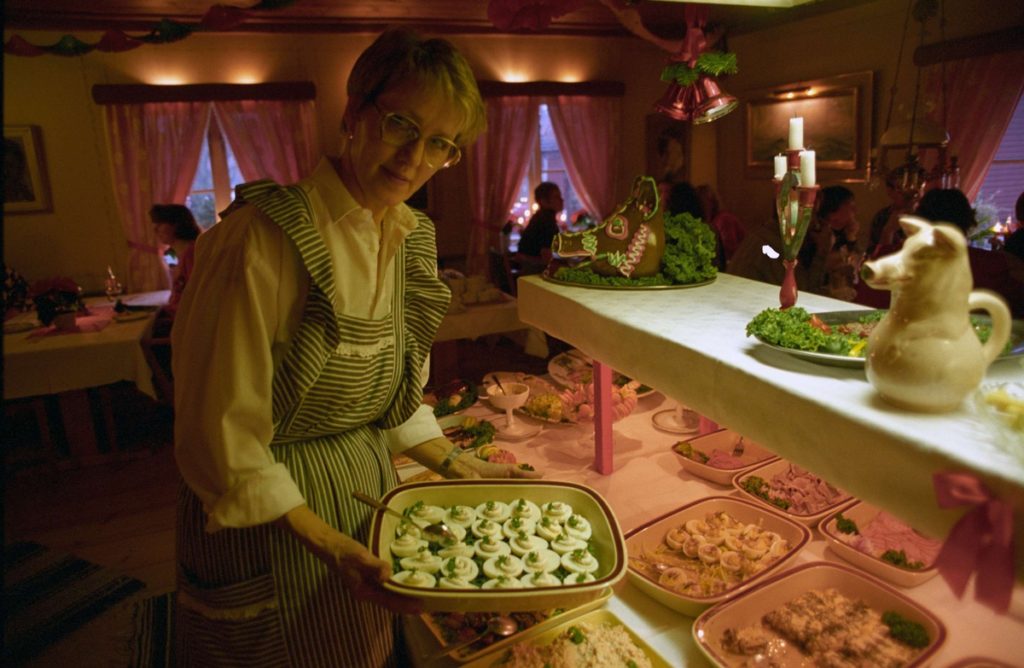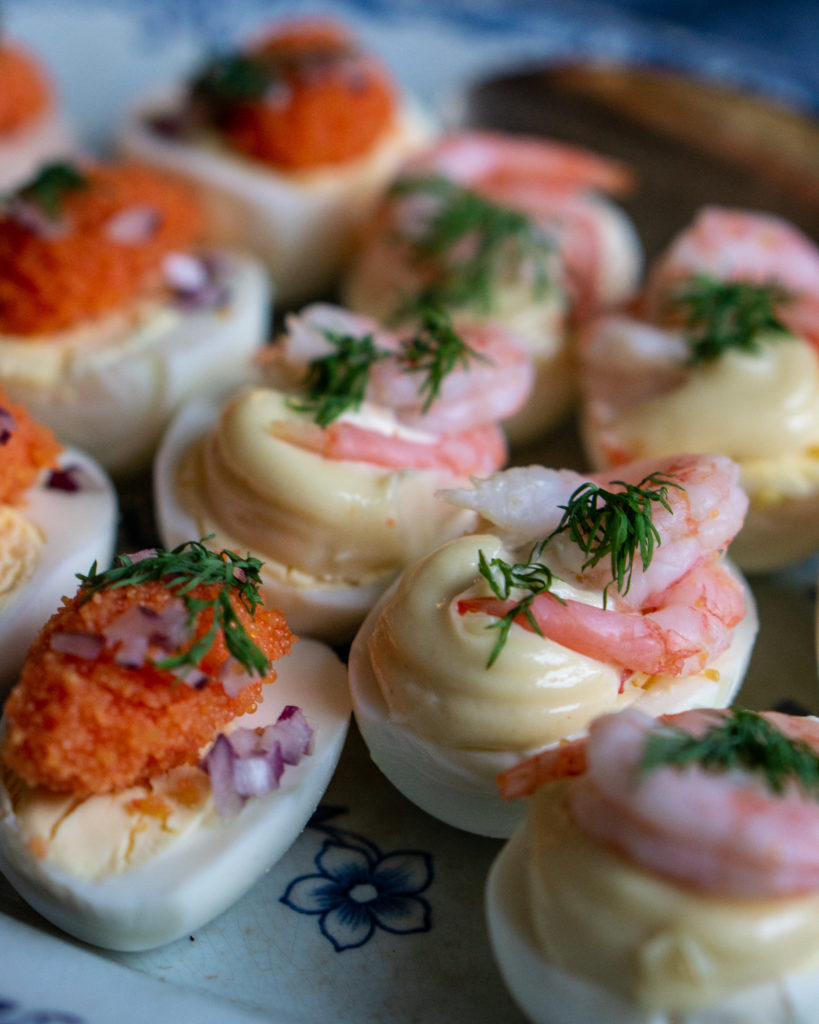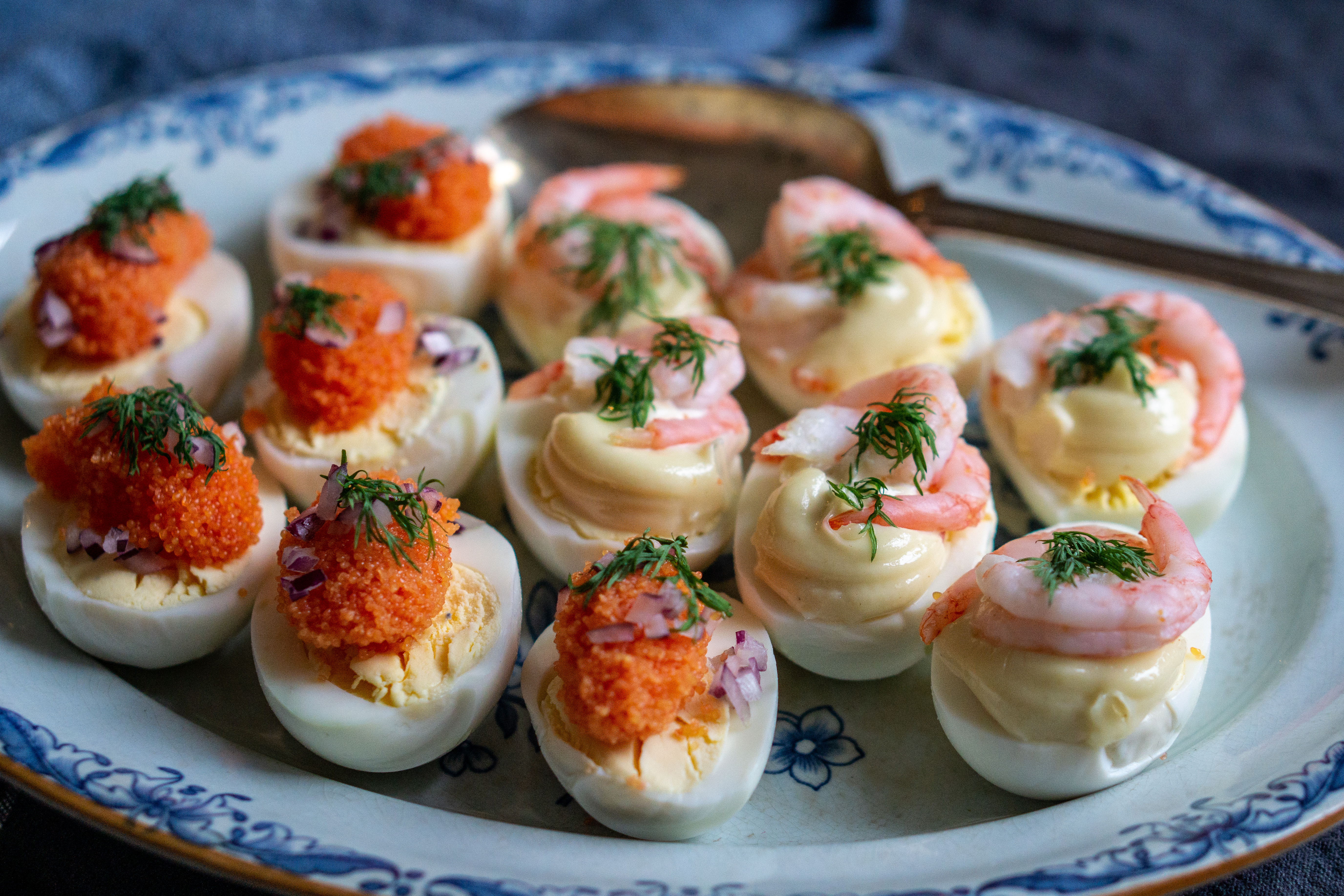It is comforting that the crowd-pleasing favorites aren’t always the elaborate, the rare, or the complicated. My sources in the restaurant industry and their smörgåsbord-eating guests have a favorite in common—egg halves!
The guests love the taste. The restaurateurs love that they are cheap and simple to make. Even better? They are filling! The guests fill up on egg halves and don’t eat as much of the more expensive treats.
So what about egg halves throughout history?
I’m not going to make historical summary of Swedish egg eating. Sorry. We’ve eaten it since the beginning of time. And, for the last hundreds of years, especially when we celebrate Easter.
That said, the egg halves have cemented their place on the Swedish smörgåsbord and popular around other holidays than Easter as well, such as Christmas, according to chefs like Magnus Nilsson.
The older way of serving boiled eggs seems to be to half them and then cover them with a sauce. For example, Björklund has a mustard sauce and a cream sauce creation in 1847.
But in 1896, Charles Emil Hagdahl has a recipe for “egg with salad” where boiled eggs are halved and filled with the yolks chopped together with meat and beetroots. This is the oldest “filled egg half-like” recipe I’ve been able to find.

In 1927, Kerstin Wenström features a recipe of “ägg à la milanaise”, or Milanese eggs, that are filled with ham and chicken or veal. They are, however, deep-fried. Not the simple, cold egg halves you see nowadays.
But then in 1931, Prinsessornas kokbok offers fyllda ägghalvor—”filled egg halves” with three different types of filling. The first is shrimps and mayonnaise, the second is boiled vegetables and mayonnaise, and the third is a mix of the boiled yolks, sprats, and cream. Bingo! The book also features another dish of filled eggs that are far more complex—filled with sauce and decorated with tomato hats.
Stora kokboken from 1946 features eggs filled with whipped cream and smoked caviar. Maybe that’s what’s served on this Christmas smörgåsbord:

Most egg halves I’ve seen nowadays seem to be filled with fish roe and onion, or mayonnaise and shrimps. Compared to the American deviled eggs, Swedes aren’t as likely to remove the yolk, although that happens.

How to make filled egg halves
You don’t really need a recipe for this, but here’s a starter. Two egg halves per person is often a good estimate—but at least in family, we tend to “need” a bit more than that. Filled egg halves are also a luxurious way to top off a nettle or spinach soup. For four people:
4 hard-boiled, cold eggs
dill
Filling I
16-32 hand-peeled prawns, depending on size (as many as you can fit on an egg half)
mayonnaise
Filling II
1 small jar of fish roe (black or red)
1 tbsp finely chopped red onion
- Peel the eggs and cut them with a sharp knife lengthwise.
- Prepare each half with either I) a dollop of mayonnaise and as many shrimps as you can elegantly and safely fit on top, or II) a small spoonful of fish roe and some finely chopped onion. If you go for the second option, try to put the onion on top of the roe, so it doesn’t discolor the egg.
- Add a few touches of dill for flavor and fanciness.
- Admire your creations. Devour.
Suggestions
For health and safety reasons, the combination of eggs and seafood means that you need to be careful not to leave the food out for hours, or keep it for a long time.
Vary the filling however you like. Vegetarian versions can be made for example vegetables and mayonnaise, or finely chopped fried mushrooms. Delicious.



0 Comments